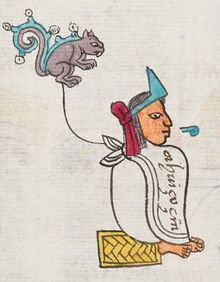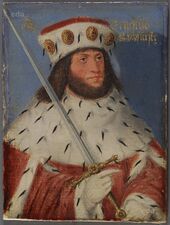1486
► | قرن 14 | << قرن 15 >> | قرن 16 | ◄
► | عقد 1450 | عقد 1460 | عقد 1470 | << عقد 1480 >> | عقد 1490 | عقد 1500 | عقد 1510 | ◄
تحويل 1-1-1486م الى هجري (وصلة خارجية) | تحويل 31-12-1486م الى هجري (وصلة خارجية) | ابحث في الموسوعة عن مواضيع متعلقة بسنة 1486
| ألفية: | الألفية 2 |
|---|---|
| قرون: | القرن 14 – القرن 15 – القرن 16 |
| عقود: | عقد 1450 عقد 1460 عقد 1470 – عقد 1480 – عقد 1490 عقد 1500 عقد 1510 |
| سنين: | 1483 1484 1485 – 1486 – 1487 1488 1489 |
| 1486 حسب الموضوع |
|---|
| الفنون والعلوم |
| العمارة - الفن |
| السياسة |
| زعماء الدول - الدول ذات السيادة |
| تصنيفات المواليد والوفيات |
| المواليد - الوفيات |
| تصنيفات التأسيسات والانحلالات |
| التأسيسات - الانحلالات |
| الفن والأدب |
| 1486 في الشعر |
| التقويم الگريگوري | 1486 MCDLXXXVI |
| آب أوربه كونديتا | 2239 |
| التقويم الأرمني | 935 ԹՎ ՋԼԵ |
| التقويم الآشوري | 6236 |
| التقويم البهائي | −358 – −357 |
| التقويم البنغالي | 893 |
| التقويم الأمازيغي | 2436 |
| سنة العهد الإنگليزي | 1 Hen. 7 – 2 Hen. 7 |
| التقويم البوذي | 2030 |
| التقويم البورمي | 848 |
| التقويم البيزنطي | 6994–6995 |
| التقويم الصيني | 乙巳年 (الخشب الثعبان) 4182 أو 4122 — إلى — 丙午年 (النار الحصان) 4183 أو 4123 |
| التقويم القبطي | 1202–1203 |
| التقويم الديسكوردي | 2652 |
| التقويم الإثيوپي | 1478–1479 |
| التقويم العبري | 5246–5247 |
| التقاويم الهندوسية | |
| - ڤيكرام سامڤات | 1542–1543 |
| - شاكا سامڤات | 1408–1409 |
| - كالي يوگا | 4587–4588 |
| تقويم الهولوسين | 11486 |
| تقويم الإگبو | 486–487 |
| التقويم الإيراني | 864–865 |
| التقويم الهجري | 890–891 |
| التقويم الياباني | Bunmei 18 (文明18年) |
| تقويم جوچى | N/A |
| التقويم اليوليوسي | 1486 MCDLXXXVI |
| التقويم الكوري | 3819 |
| تقويم مينگوو | 426 قبل جمهورية الصين 民前426年 |
| التقويم الشمسي التايلندي | 2029 |
Year 1486 (MCDLXXXVI) was a common year starting on Sunday.
أحداث
يناير-ديسمبر
- January 18 – King Henry VII of England and Elizabeth of York are married, uniting the House of Lancaster and the House of York, after the Wars of the Roses.[1]
- February 16 – Archduke Maximilian I of Habsburg is elected King of the Romans at Frankfurt (crowned April 9 at Aachen).
- February 18 – Lord Chaitanya Mahaprabhu is born in the town of Nadia, West Bengal, India, just after sunset. He is regarded as an incarnation, or avatar, of Lord Krsna, and later comes to inaugurate the sankirtana movement, or the chanting of the Holy Names of the Lord. This chanting, or mantra meditation, is first brought to the United States in 1965, by A.C. Bhaktivedanta Swami Prabhupada.[2]
- April 21 – The adoption of the Sentència Arbitral de Guadalupe ends the War of the Remences, in the Principality of Catalonia.
رحلات الاستكشاف البرتغالية
- On his second voyage, which had begun the previous year, the Portuguese sailor Diogo Cão became the first European to reach Cabo Cross at 21°46' south latitude in present-day Namibia in January. He had a stone stele, a so-called Padrão , erected on the headland. This point, north of Walvis Bay , is considered his furthest south. On the same voyage, he also discovered Cabo Frio and Ilha dos Tigres . On his return journey, Diogo Cão probably sailed down the Congo as far as the Ielala Falls , because the names of Cão and two of his fellow travelers were later found carved into a stone there. Cão presumably died on the return journey to Europe.
وسط أمريكا
- Auítzotl succeeds his deceased brother Tízoc as ruler of the Aztec city of Tenochtitlan . The Aztecs emerged from Tízoc's reign with a weakened foreign policy. This is evident in the fact that the heads of neighboring states, contrary to usual practice, sharply declined the customary invitation to the accession celebrations. Another indication of this is that Aztec sources mention places as Auítzotl's war targets that had already been conquered by previous rulers, such as the Valley of Toluca . These are places that had fallen away from the Aztecs during Tízoc's reign.
مجهولة التاريخ
- Tízoc, Aztec ruler of Tenochtitlan, dies. Some sources suggest that he was poisoned, others that he was the victim of "sorcery" or illness. He is succeeded by his brother Āhuitzotl.
- Sigismund, Archduke of Tyrol, issues Europe's first large silver coin, the guldengroschen, which will later become the thaler.
- Giovanni Pico della Mirandola returns to Florence, and writes Oration on the Dignity of Man.
- The Medici giraffe arrives in Florence.
- Johann Reuchlin begins studying the Hebrew language.
- The first written use of the word football to describe the ball.
مواليد
- January 6 – Martin Agricola, German Renaissance composer and music theorist (d. 1556)[3]
- February 10 – George of the Palatinate, German nobleman; Bishop of Speyer (1513–1529) (d. 1529)
- February 18 – Chaitanya Mahaprabhu, Bengali ascetic and monk (d. 1534)
- July 2 – Jacopo Sansovino, Italian sculptor and architect (d. 1570)[4]
- July 16 – Andrea del Sarto, Italian painter (d. 1530)
- July 25 – Albrecht VII, Duke of Mecklenburg (1503–1520), then Duke of Mecklenburg-Güstrow (1520–1547) (d. 1547)
- July 28 – Pieter Gillis, French philosopher (d. 1533)
- August 3 – Imperia Cognati, Italian courtesan (d. 1512)
- August 23 – Sigismund von Herberstein, Austrian diplomat and historian (d. 1566)
- September 14 – Heinrich Cornelius Agrippa, German astrologer and alchemist (d. 1535)
- September 20 – Arthur, Prince of Wales, son of Henry VII of England (d. 1502)[5]
- October 10 – Charles III, Duke of Savoy (d. 1553)
- November 13 – Johann Eck, German Scholastic theologian and defender of Catholicism during the Protestant Reformation (d. 1543)
- December 9 – Philip III, Count of Waldeck-Eisenberg (1524–1539) (d. 1539)
- date unknown – Shimon Lavi, Sephardi kabbalist (d. 1585)
- probable
- Colin Campbell, 3rd Earl of Argyll (d. 1535)
- Gerolamo Emiliani, Venetian-born humanitarian, canonized (d. 1537)
- Ludwig Senfl, Swiss composer (d. 1542 or 1543)
وفيات
- January 30 – Jacques of Savoy, Count of Romont, Prince of Savoy (b. 1450)
- March 11 – Albrecht III Achilles, Elector of Brandenburg (b. 1414)
- March 30 – Thomas Bourchier, Archbishop of Canterbury and Lord Chancellor of England (b. c. 1404)
- May – Louis I, Count of Montpensier (b. 1405)
- July 14 – Margaret of Denmark, Scottish queen consort, daughter of Christian I of Denmark (b. 1456)[6]
- August (day unknown) – Marco Barbarigo, the 73rd Doge of Venice, was said to have died in a dispute caused by his brother and successor, Agostino Barbarigo.
- August 3 – Asakura Ujikage, 8th head of the Japanese Asakura clan (b. 1449)
- August 11 – William Waynflete, English Lord Chancellor and bishop of Winchester (b. c. 1398)[7]
- August 26 – Ernest, Elector of Saxony, progenitor of the Ernestine Wettins (b. 1441)
- September 2 – Guy XIV de Laval, French noble (b. 1406)
- September 19 – Richard Oldham, English Catholic bishop
- مجهولة التاريخ
- Tízoc, Aztec ruler of Tenochtitlan (perhaps poisoned)[8]
- Souvanna Banlang, Lan Xang king (b. 1455)
- probable – Aristotile Fioravanti, Italian architect and engineer (b. 1415)
References
- ^ Iain Fenlon (19 April 2001). Early Music History: Volume 19: Studies in Medieval and Early Modern Music. Cambridge University Press. p. 267. ISBN 978-0-521-79073-4.
- ^ "Sri Caitanya Mahaprabhu: His Life and Precepts" by Srila Bhaktivinode Thakura August 20, 1896
- ^ Don Michael Randel (1996). The Harvard Biographical Dictionary of Music. Harvard University Press. p. 7. ISBN 978-0-674-37299-3.
- ^ Richard John Goy (1 January 2006). Building Renaissance Venice: Patrons, Architects and Builders, C. 1430-1500. Yale University Press. p. 261. ISBN 0-300-11292-0.
- ^ Humanistica Lovaniensia. University Press. 2001. p. 169. ISBN 978-90-5867-172-1.
- ^ "Margaret of Denmark: Biography on Undiscovered Scotland". www.undiscoveredscotland.co.uk. Retrieved 14 May 2019.
- ^ Church of England. Diocese of Bath and Wells. Bishop (1492-1494 : Fox) (1889). The Register of Richard Fox, While Bishop of Bath and Wells, A.D. MCCCCXCII-MCCCCXCIV: ... Harrison. p. 11.
{{cite book}}: CS1 maint: numeric names: authors list (link) - ^ "Tízoc, "El que hace sacrificio" (1481-1486)" [Tizoc, "He who makes sacrifices" (1481-1486)]. Arqueologia Mexican (in الإسبانية). July 13, 2016. Retrieved June 6, 2019.
External links
 Media related to 1486 at Wikimedia Commons
Media related to 1486 at Wikimedia Commons
All content in this article is created by Marefa contributors and is © Marefa. All rights reserved.



